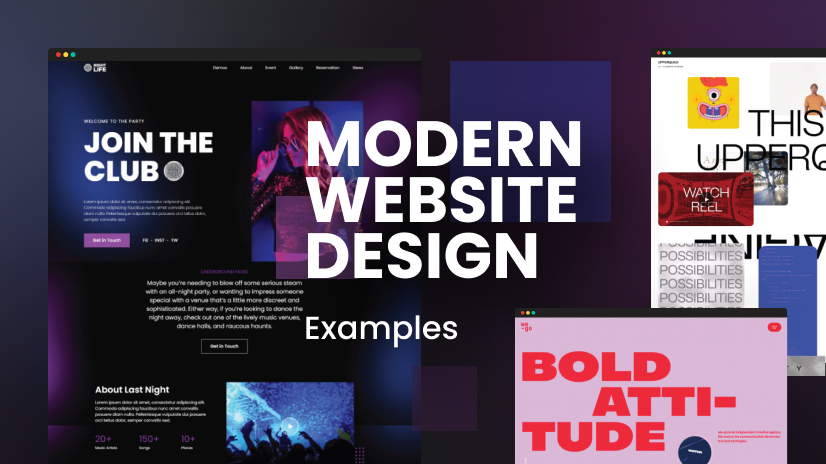Leading Tips for Developing an Impactful Internet Site Layout That Transforms
In today's digital landscape, the relevance of an impactful web site design can not be overstated, particularly when it concerns transforming visitors right into customers. To attain this, one should take into consideration a selection of variables, including comprehending the target audience, prioritizing customer experience, and maximizing for mobile systems. Furthermore, the tactical use engaging call-to-actions and a well-defined visual hierarchy plays a critical function in leading customers with their trip. As we explore these important components, it comes to be noticeable that the success of your website depends upon more than simply aesthetic appeal; it needs a thoughtful method to design and performance.

Understand Your Target Market
Understanding your target market is basic to reliable website layout, as it prepares for producing an appealing user experience. Identifying who your individuals are, including their demographics, choices, and habits, allows developers to customize the website's content, layout, and performance to fulfill particular needs.
Carrying out comprehensive market research is important in this process. Surveys, meetings, and analytics can give useful insights into individual assumptions and pain points. By assembling this data, developers can create user personas that represent different sectors of the audience, making sure that style decisions are notified and appropriate.
Moreover, understanding the target audience aids in selecting appropriate design elements such as color design, typography, and imagery that resonate with users. A web site that talks straight to its audience fosters a feeling of connection and depend on, urging longer brows through and higher conversion prices.
Ultimately, a user-centered technique to internet site layout not only boosts user complete satisfaction but additionally sustains service objectives by driving involvement and commitment. By prioritizing the demands and choices of the target audience, a web site can efficiently serve its function and achieve preferred results.
Prioritize Customer Experience
To enhance the overall effectiveness of a website, prioritizing user experience (UX) is vital (Website Design). A well-designed UX makes certain that site visitors can navigate the website easily, find info rapidly, and engage with content meaningfully. This results in increased user complete satisfaction and greater conversion rates
Begin by carrying out user-friendly navigating. Menus should be rationally structured, allowing individuals to locate vital areas of the website with marginal effort. Consistency in style components, such as color pattern and fonts, fosters experience, which is vital for maintaining user involvement.
In addition, consider the filling speed of your site. A delay of simply a few seconds can result in considerable drop-offs, as individuals are less likely to await a slow-loading web page. Streamlining pictures and maximizing code can improve efficiency and preserve visitors.
By focusing on user experience, you not just develop a more enjoyable environment for site visitors yet likewise enhance your brand name's integrity. Eventually, an emphasis on UX is an investment in the long-term success of your internet site.
Enhance for Mobile Tools
Optimizing for mobile phones is critical in today's electronic landscape, where an increasing variety of users accessibility internet sites with smart devices and tablets. A mobile-friendly layout not only enhances user experience but additionally plays a significant function in improving search engine positions. To attain this, it is important to adopt a receptive design that instantly adapts to different screen sizes and positionings.

Filling rate is another crucial aspect; mobile users are usually much less individual and expect fast access to information. By focusing on mobile optimization, you Full Article guarantee that your web site remains competitive and efficiently engages a broader audience.
Usage Compelling Call-to-Actions
A website's effectiveness usually depends upon its capability to direct visitors toward preferred activities, making engaging call-to-actions (CTAs) important components of style. CTAs offer as the pivotal points that guide users to engage with the site, whether that means making a purchase, registering for a newsletter, or downloading a resource.
To create effective CTAs, clearness is critical. Usage concise language that plainly connects the action you desire the user to take.
Additionally, the layout of CTAs should attract attention without being obtrusive. Use contrasting shades and clear typefaces to ensure they catch focus. Furthermore, consider utilizing directional cues, such as arrows or images, site here to direct users toward these switches. By concentrating on these components, businesses can considerably improve individual involvement, driving conversions and inevitably accomplishing their site's objectives.
Concentrate On Visual Hierarchy
Effective web site design relies greatly on a well-structured visual power structure that guides users with content effortlessly. By organizing aspects in a way that focuses on information, developers can boost individual experience and promote decision-making. This includes utilizing dimension, color, comparison, and spacing purposefully to accentuate one of the most vital elements of a website.
The use of bigger typefaces for headings and subheadings develops a clear difference between different areas, permitting individuals to scan content easily. Additionally, employing different shades for switches and calls-to-action can catch individual focus and urge communication. Whitespace is one more vital element; it avoids clutter and enables customers to concentrate on essential messages without diversions.
Pictures and graphics should match the message while likewise adhering to the well established power structure, reinforcing the general message (Website Design). Uniformity in layout components, such as color plans and typography, further strengthens the visual hierarchy, making navigating intuitive

Conclusion
In final thought, reliable web site design demands a thorough understanding of the target audience, prioritization of user experience, and mobile optimization. Ultimately, a well-executed website design offers as a crucial component in driving customer actions and attaining organization purposes.